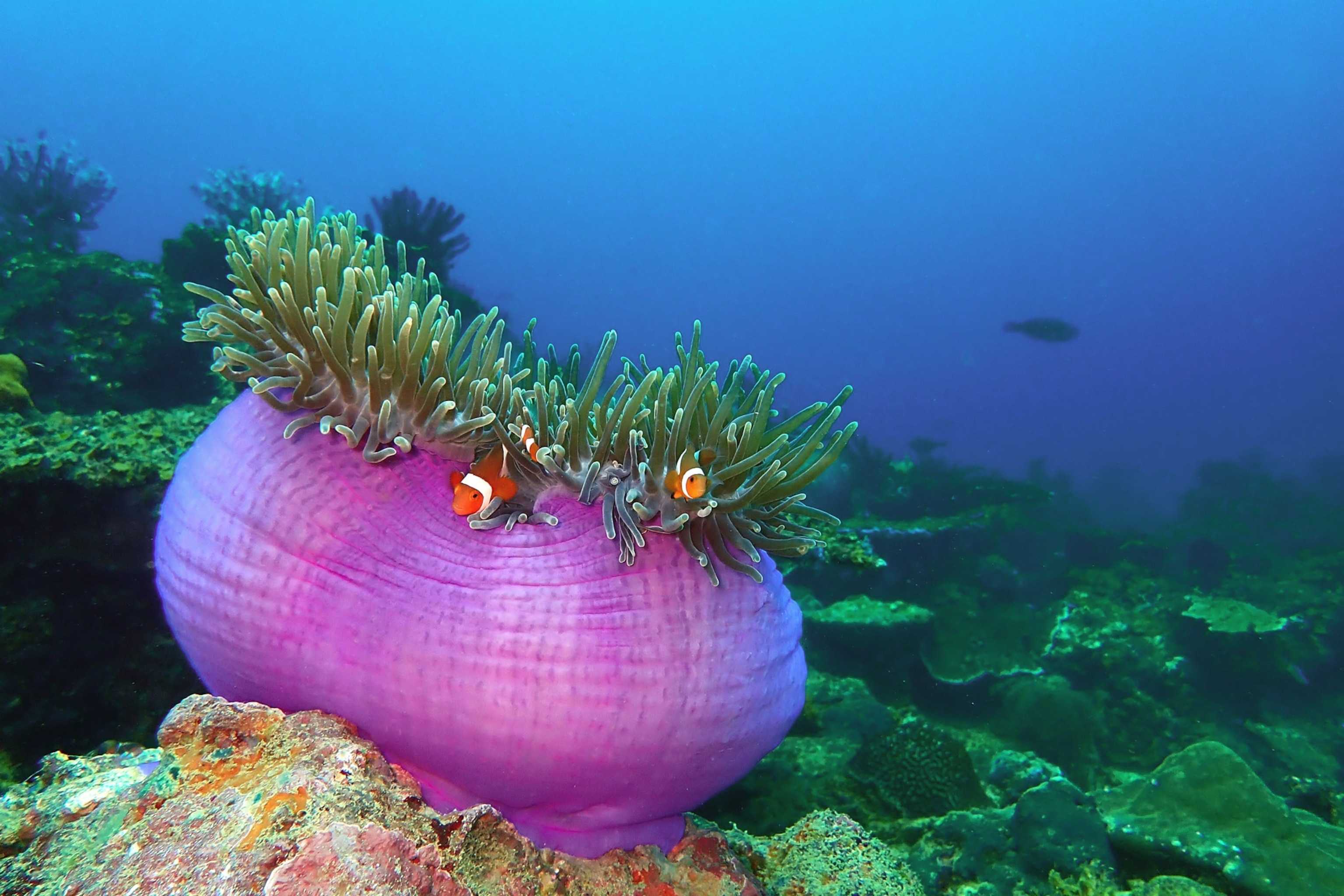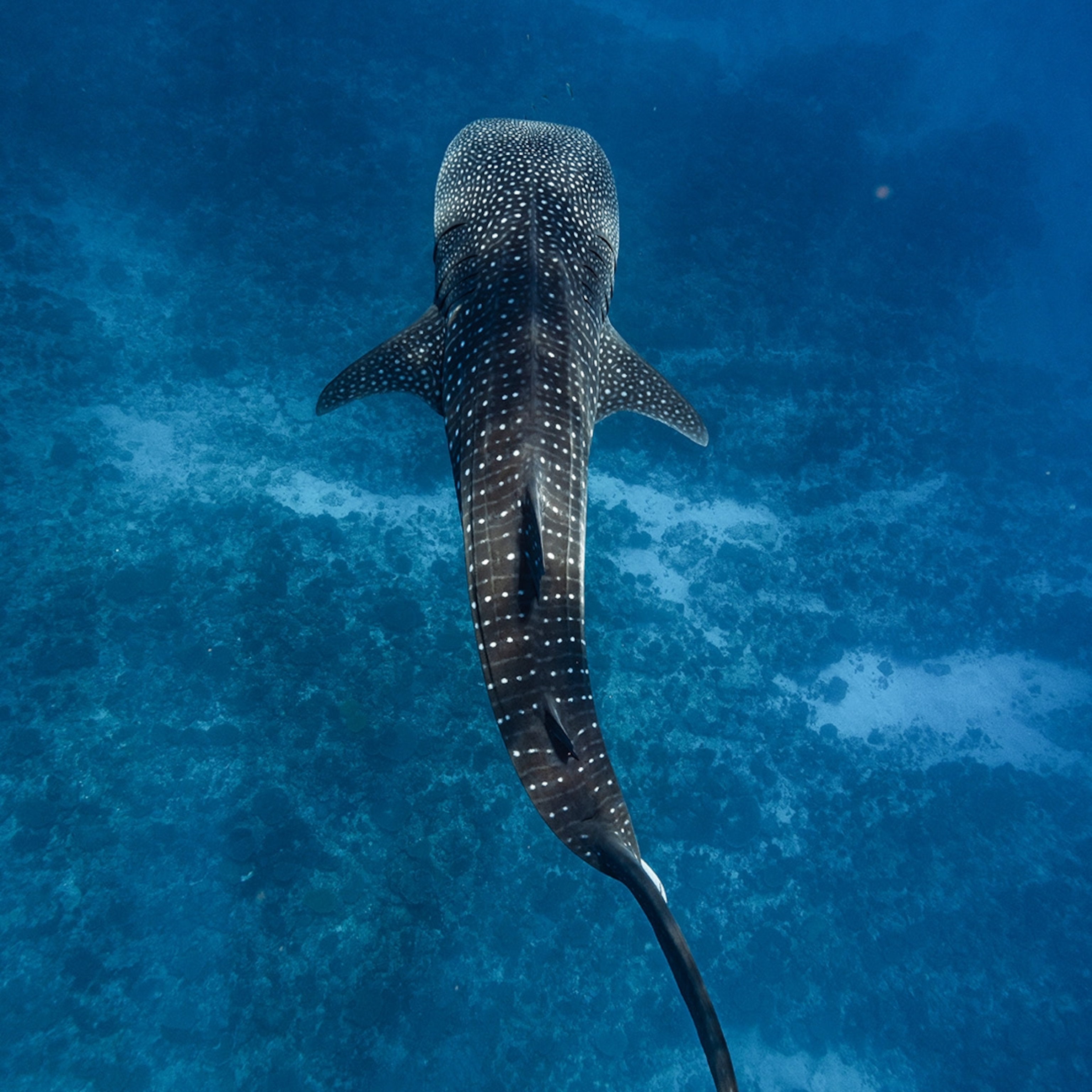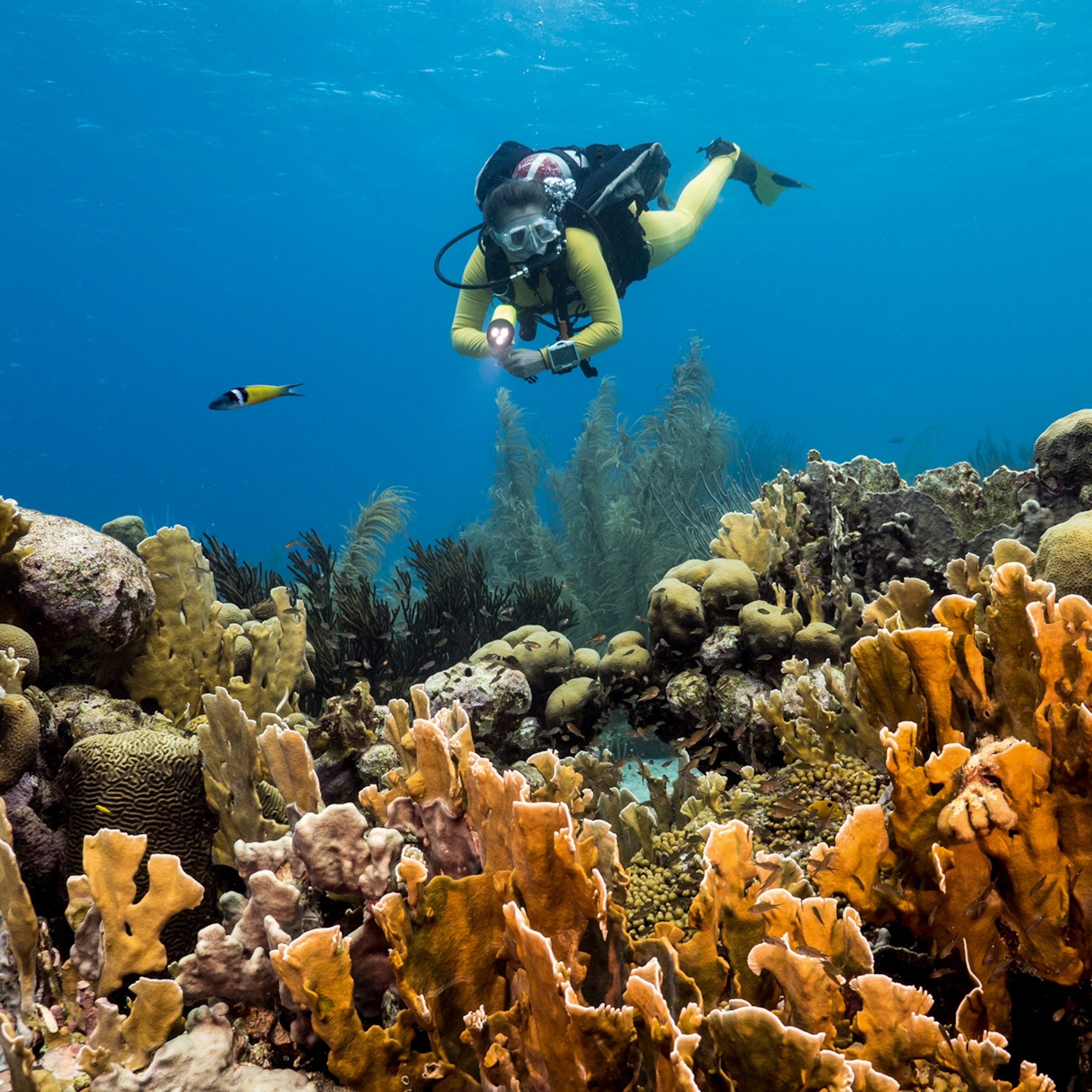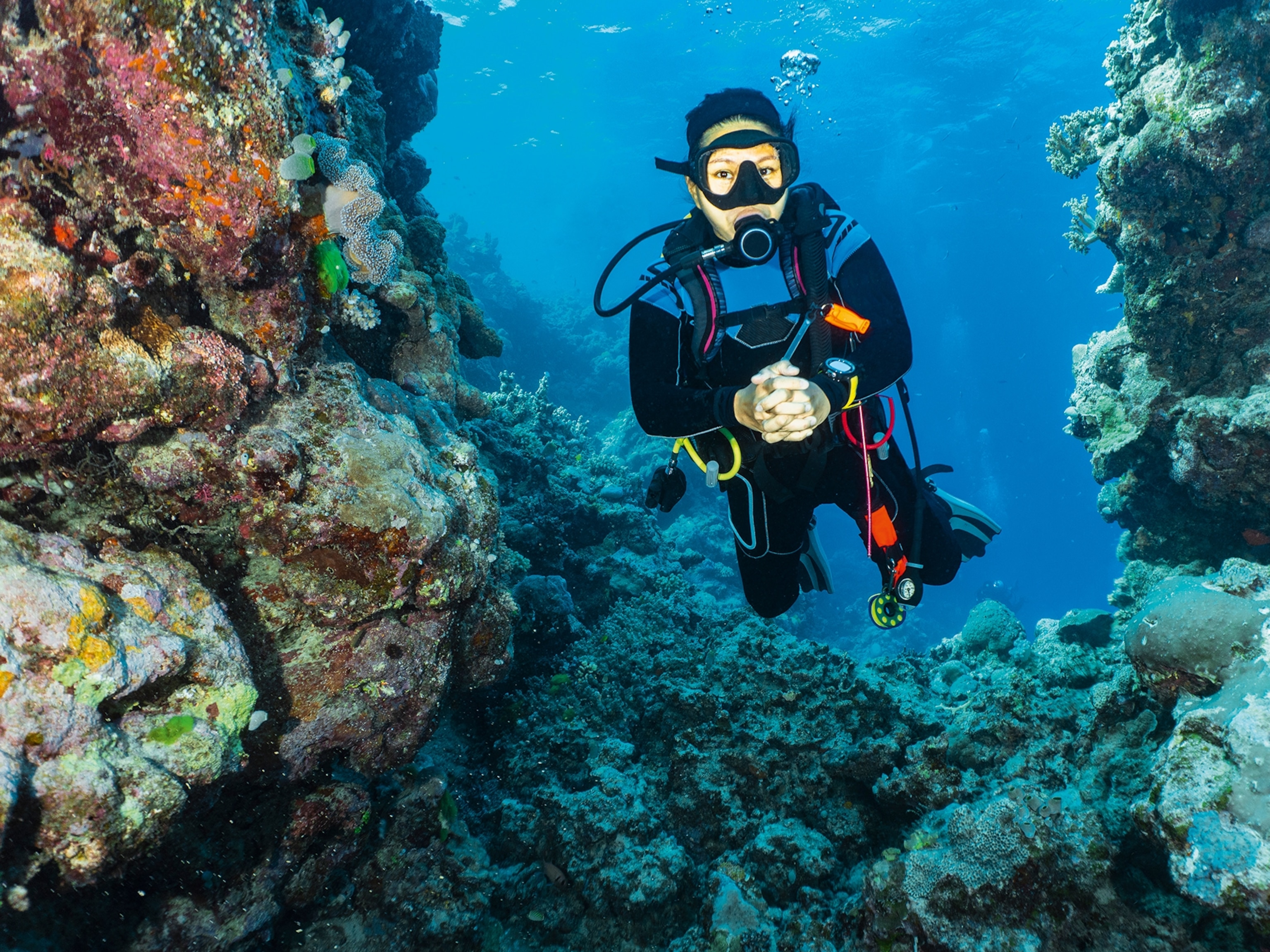Beneath the blue: 5 of the best diving experiences in Sabah, Malaysia
From world-famous Sipadan to the exclusive Island of Mataking, Sabah is home to an abundance of first-class dive sites. Here are five of the best.

Located on the Northern part of Borneo Island, in the geographical centre of maritime Southeast Asia, diversity permeates the state of Sabah both on land and underwater. Its dive sites are among the world’s finest and, with the state’s sandy beaches, pristine reefs and schools of tropical fish, it’s a veritable paradise for all those looking to throw on a wetsuit and head out to sea. Here, you’ll witness iridescent shoals of needlefish, see the shadows of hammerhead sharks slide serenely by and swim alongside hawksbill turtles as they dive for sea sponge on the ocean floor.
Travellers tend to head for Sipadan, an island that’s earned its place on the international stage, but look further afield for countless diving options. For hulking shipwrecks, head to Mabul, while the other islands around the area, such as Mataking and Lankayan, allow for a more personal dive experience where you'll likely only have schools of tropical fish for company.

1. Sipadan
Best for marine diversity
Diving off the coast of Sipadan Island is highly renowned, and for good reason. This fringing reef is the largest in Southeast Asia and, what’s more, it’s home to the highest marine biodiversity on the planet. Among the reef’s star attractions are swirling shoals of barracuda and reef sharks, enormous green turtles, squadrons of manta rays and pygmy seahorses no bigger than a one penny piece. Another striking feature is Sipadan’s coral wall, falling away for a staggering 2,000ft straight down to the seabed. It’s an awe-inspiring sight, and a slightly unnerving one, too, as you sink to inky depths and the light slowly fades away. There are 12 dive sites dotted around the island, offering a combination of these deep-water drop-offs, plus flourishing coral gardens and even an underwater cave system known as turtle cavern. Legend has it that all the island’s turtles come here to die — a collection of bones can be seen strewn across the sea floor.

2. Mabul
Best for underwater photography and shipwrecks
The reefs that lie off the coast of Mabul Island may not be as famous as nearby Sipadan, but these varied dive sites have something for every taste. This is one of the best places for muck diving, where crystal-clear waters are replaced with slightly murkier depths, and all the creatures that come with it. Keen photographers will be greeted with a visually hypnotic world of flamboyant cuttlefish, giant frogfish and the beautiful but highly venomous blue-ringed octopus, while Mabul Island’s artificial reef offers an interesting alternative to coral. Built on a sprawling stretch of sand, huge wooden structures rise from the seabed, providing homes for an amazing array of underwater creatures, from jackfish to mandarin fish and groupers. The island’s 12 dive sites range from shallow, gently sloping reefs to rusting shipwrecks lying almost 100ft below the waves.
3. Layang-Layang
Best for hammerhead sharks
Small but perfectly formed, Layang-Layang covers a compact area of five square miles, linking 16 coral reefs and offering some of the most pristine diving in the state. Situated 186 miles northwest of Kota Kinabalu, marine life is varied and rich here, though the main draw is undoubtedly the chance to spot the elusive hammerhead shark. From March to May, vast schools cruise these deep waters searching for stingray. To spot them, aim to swim away from the reefs and seek the inky shadows in the depths, a sign these majestic creatures are about to pass by. Exemplary anti-pollution measures have meant Layang-Layang’s reefs are among the healthiest in Malaysia. Known as the jewel of the Borneo banks, coral diversity is astounding, and the water is as clear as glass. In fact, visibility remains intact to depths of more than 130ft, revealing a fascinating cast of underwater creatures that seldom swim close to the surface.

4. Tunku Abdul Rahman Park
Best for whale sharks
A picture-perfect cluster of tiny, palm-fringed islands, Tunku Abdul Rahman Park lies just two miles from the state’s capital, Kota Kinabalu. Putter up to its sandy beaches, however, and the metropolis will feel worlds away. Well set up for visitors, travellers to the five islands can trek through tropical forests, lounge beside beach shacks or windsurf off the coast. Beneath the waves, there are 50 dive sites where divers will be greeted with vast coral jungles (of both healthy hard and soft coral) and mangrove areas providing protection for juvenile fish. Cold water currents between December and March see scores of migrating whale sharks pass through on their long journey through the Sulu Sea, while more permanent residents include snappers, fusiliers, moray eels and lionfish, as well as seven types of clownfish. Look out for Nemo’s rarest relative, an adorable little fish with distinctive black and white stripes.

5. Mataking Island
Best for a secluded escape
Rich rewards await those who are prepared to make the long journey to Mataking Island. A tiny speck of paradise on the Borneo border, Mataking has one luxury resort, a sweeping arc of sand and very little else. The surrounding ocean, however, tells a different tale. The waters here teem with life, supported by a virgin reef that wraps around the island. A turtle hatchery on shore means between July and October, divers will swim alongside tiny hatchlings, as well as manta rays, octopus and jackfish. Careful diving is crucial, and swirling currents can make it feel a bit like you’re in a washing machine. While here, take the opportunity to send a letter or postcard from Malaysia's first underwater post box which will be marked with a special postmark.
Flights to Kota Kinabalu fly regularly from Heathrow via Singapore or Kuala Lumpa. From there, buses are the easiest mode of transportation between Sabah’s main cities and towns. For a deep dive into Borneo, book onto G Adventures' East Sabah Adventure tour for expert guides and luxury accommodation. For more information, visit sabahtourism.com






